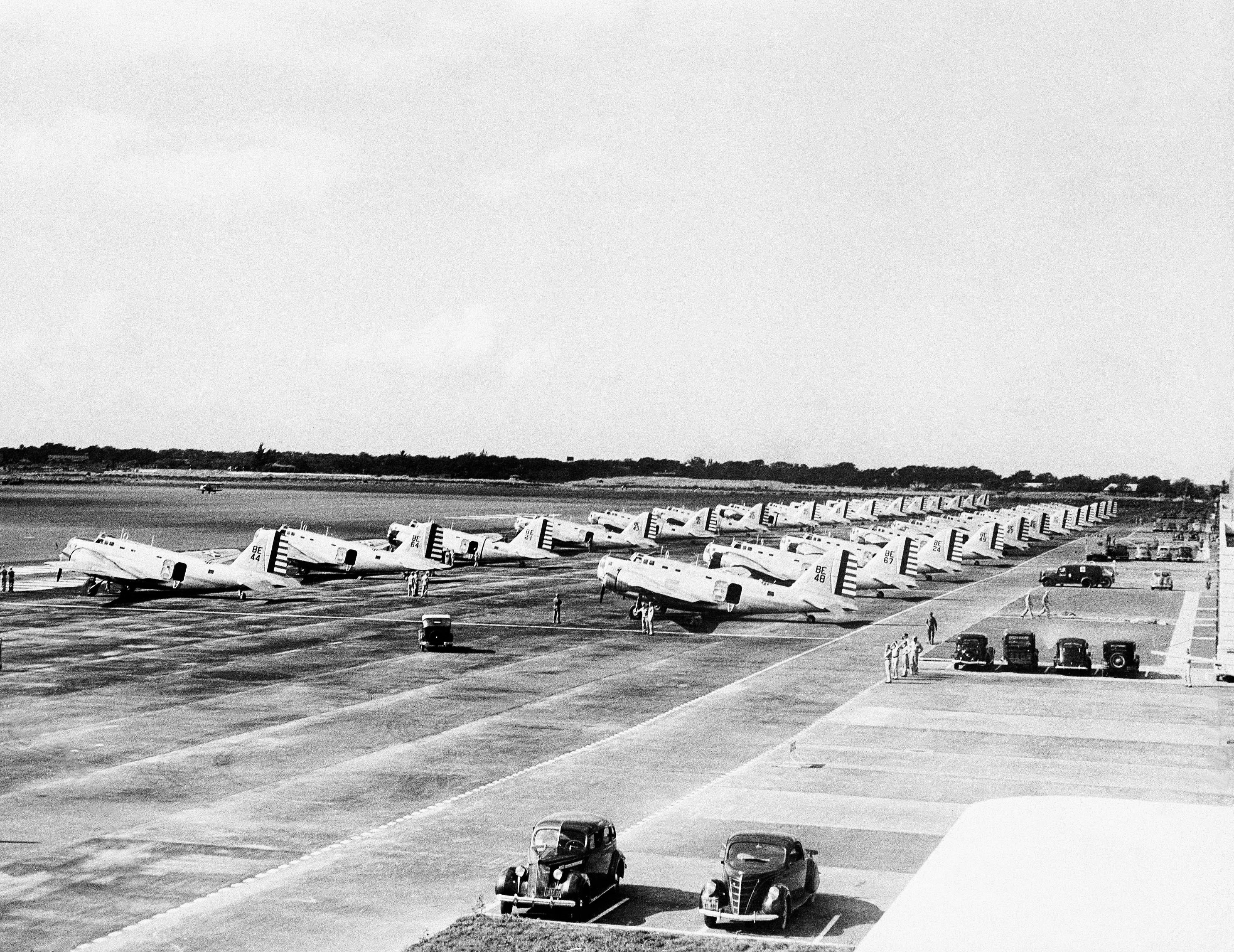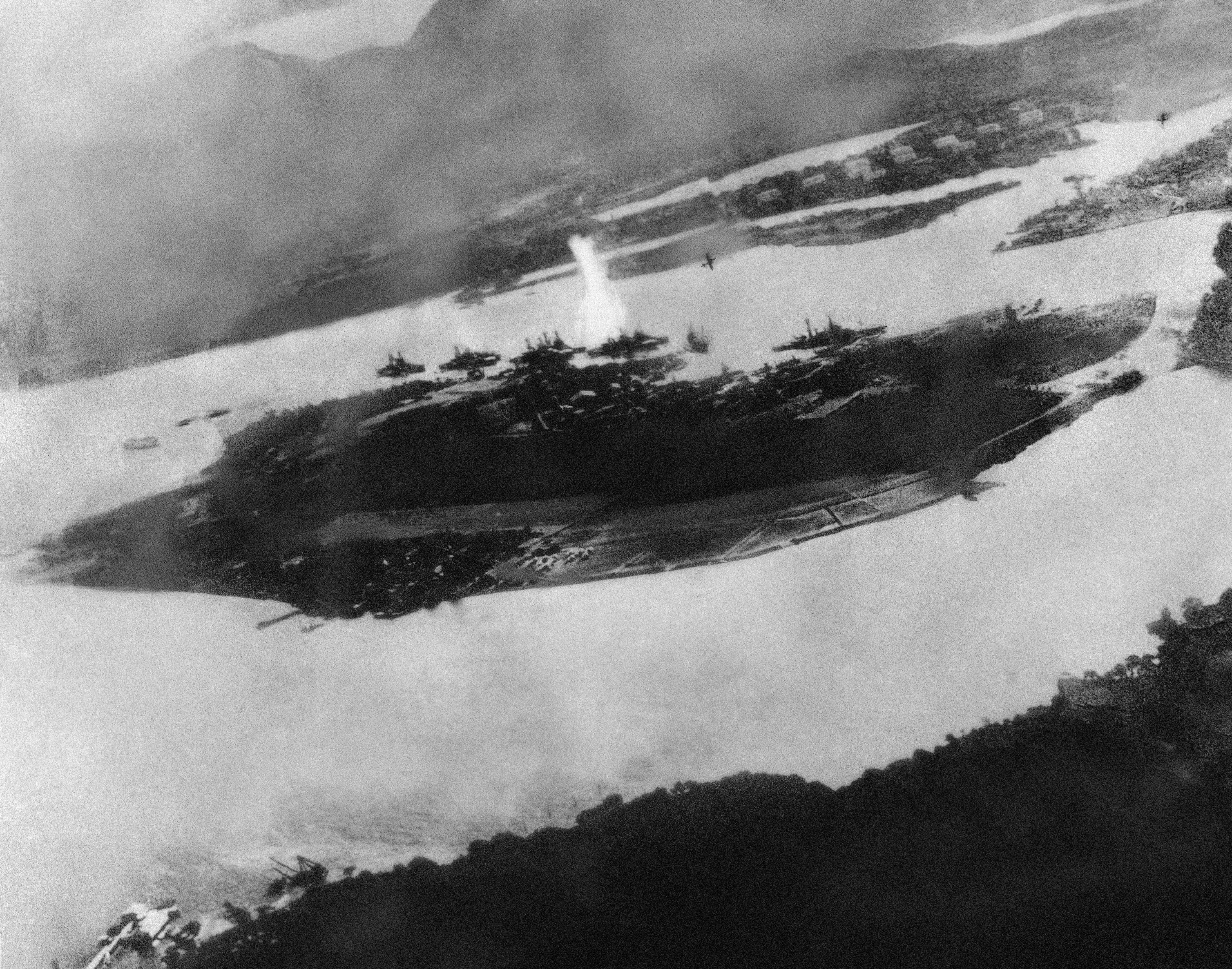It was whaling, sugar and pineapples that first brought Pearl Harbor to America's attention.
At the whaling industry's peak in 1846, nearly 800 whaling vessels made port calls in the Hawaiian Islands, mostly U.S.-flagged ships, according to Navy history and heritage command. The Navy was ordered to send regular patrols around the islands to protect the commercial whaling ships from pirates or rival nations.
The impact on Hawaii, an exotic land where natives farmed and fished for centuries, was dramatic. Ship repair facilities cropped up, and Honolulu and Lahaina became bustling towns catering to hungry, thirsty and sometimes rowdy sailors. Bakeries, laundries, carpenter shops, blacksmiths and boarding houses sprang up overnight, according to a Navy history command account of those years.
"Business was booming," said Guy Nasuti, a Navy historian.
Just when it seemed the growth would never stop, it did. The discovery of oil in 1859 in Pennsylvania devastated the whaling industry, since the need for whale oil for lamps and other uses drove much of the demand. The Civil War then devastated what was left of the fleet. The Confederate ship Shenandoah pursued Yankee whaling ships into the farthest reaches of the Pacific, successfully sinking many of them, in an effort to knock the air out of the Union economy.
By the late part of the 19th century, Hawaii's whaling boom was over.
But Washington didn't lose interest in using Hawaii as a toehold in the Pacific.
The Civil War may have helped kill the whaling industry, but it provided Hawaii with another economic opportunity and America with another chance at getting a Pacific port. The North's boycott of Southern sugar led to an expansion in imports from Hawaii, helping to make sugar plantation owners rich. Pineapples would emerge as Hawaii's second-largest export crop.
At about the same time, Washington was growing more interested in establishing a more robust naval presence in the Pacific. Hawaii was a natural choice.
Maj. Gen. John Schofield and Brevit Brigadier Gen. B.S. Alexander arrived in Hawaii in 1873 aboard the USS California on a secret mission "to examine the defensive capabilities and potential commercial facilities of the Hawaiian Islands," the Navy history said.

Original caption from 1941: "Planes are lined up at Hickham Field, Air Corps post on Oahu, Hawaii, in an undated image. Reports said that a Japanese bomb struck the field. Washington made the announcement Dec. 7, 1941. "
Photo Credit: Cliff Owen/AP
"With one exception there is no harbor on the islands that can be made to satisfy all the conditions necessary for a harbor of refuge," Schofield wrote. "This exception is the harbor of the 'Ewa' or 'Pearl River.' "
Two years later, the United States and Hawaii signed a "reciprocity treaty" allowing Hawaii to export sugar to the United States duty-free in return for a pledge that Hawaii would not lease the Pearl River inlet to any other country.
Naturally, the sugar barons put pressure on King Kalakaua to sign the treaty. In return, the United States got what it viewed as access to a well-defended port in the Pacific.
After the Spanish-American War in 1898, the United States annexed Hawaii and, in the years following, "began to look more seriously at the need for an American military presence in the Pacific," the Navy history said.
Pearl Harbor again emerged at the center of America's Pacific ambitions.
By 1940, Washington was worried about Japan, which was growing more militaristic and expansionist. Again, Pearl Harbor was the answer.
President Franklin Roosevelt ordered the entire Pacific Fleet, nearly 100 ships, to Pearl Harbor to deter growing Japanese aggression.
Roosevelt, a former assistant Navy secretary, was fascinated by the sea service and didn't hesitate to involve himself in the minutest details of naval policy. "Roosevelt saw himself as a naval expert," Twomey said.
The arrival of the Pacific Fleet brought Pearl Harbor to a new level. "The fighting strength of Pearl Harbor was at its peak," Twomey said.
Pearl Harbor was also congested. It would take hours to get the entire fleet out to sea in the case of an attack.

Believed to be the first bomb dropped on Pearl Harbor, Hawaii, in the sneak-attack on Dec. 7, 1941, this picture was found torn to pieces at Yokusuka Base by photographer's mate 2/C Martin J. Shemanski of Plymouth, Pa. One Japanese plane is shown pulling out of a dive near bomb eruption (center) and another the air at upper right.
Photo Credit: Cliff Owen/AP
It was a vulnerability that didn't go unnoticed by some commanders. "All you had to do was drive down here when the fleet was all in," Army Lt. Gen. Walter Short said, according to Countdown to Pearl Harbor. "There was too little water for the number of ships."
Not long afterward came the devastating attack.
But Pearl Harbor's history didn't end on Dec. 7, 1941. The base remained a major supply facility for the Pacific theater during World War II and later served as a logistics hub for the wars in Korea and Vietnam.
In 2010, the airfield and port were merged to create Joint Base Pearl Harbor-Hickam, and in recent years the Pentagon has said it plans to refocus on the Pacific as the U.S. troop levels in Iraq and Afghanistan declined and concerns about China grew.
"America needed Pearl Harbor," Nasuti said, referring to the years leading up to World War II.
It still does.




